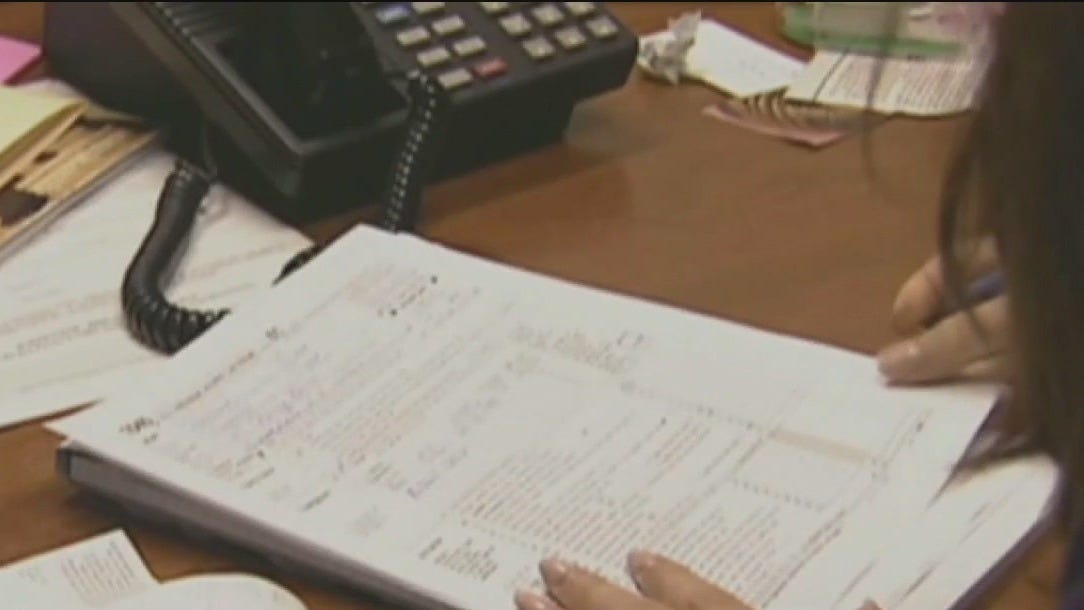Use Venmo, PayPal? Why you're being sent a 1099-K this tax season

If you’re a freelancer, business owner, or just have a small side hustle, you should know about the new tax requirement this year for electronic payments through Venmo, PayPal, online marketplaces and other third-party apps.
As part of former President Joe Biden’s attempt to ensure everyone pays their fair share of taxes, Congress lowered in 2021 the threshold for reporting income on payment apps from $20,000 and 200 transactions annually to $600 for a single transaction. Income at or above those thresholds would trigger a Form 1099-K, or report of payments you received for goods or services during the year.
The law was supposed to go into effect in 2022 but was delayed twice because financial firms complained it couldn’t get its systems ready to send people a 1099-K at that $600 threshold in time to comply. The IRS decided to phase in the changes, starting with a $5,000 annual threshold in 2024, $2,500 in 2025 and finally, $600 in 2026 and later.
With the reporting threshold dropping, more people than ever are expected to receive a 1099-K. Here is how the new reporting rules around 1099-Ks work:
What is a 1099-K and who sends them?
Form 1099-K is a report of payments you got for goods or services during the year from credit, debit, or stored value cards, such as gift cards or payment cards and third-party payment apps or online marketplaces like eBay. If your transaction reaches a certain threshold, these firms are required to send you and the IRS a 1099-K.
Note that payment platform Zelle isn’t included in the list of senders. Zelle is a tool that simply moves money directly from one account to another. You can’t hold a balance on Zelle the way you can on other platforms like Venmo or PayPal, which means Zelle’s different. It never takes possession of the money.
Personal payments on these apps shouldn’t trigger a 1099-K because those aren’t taxable income, the IRS said. But you need to note these types of payments as nonbusiness in the payment apps when possible, it said.
What if you receive a 1099-K that you shouldn’t have?
Millions of Americans also use these payment platforms to send money to friends and family as gifts or to split a meal or other bill. Rest assured. Those payments shouldn’t generate a tax form and trigger an income tax bill if you mark them as such, but mistakes happen.
If you receive a 1099-K that you shouldn’t have, you should contact the issuer immediately, the IRS said. Under "Filer" on the top left corner of Form 1099-K, you can find the name and contact information of the issuer. Ask for a corrected Form 1099-K that shows a zero amount. Keep a copy of the original form and all correspondence with the issuer for your records, the agency said.
Don’t delay filing your tax return even if your 1099-K is incorrect, the IRS said. For example, if the taxpayer ID on your 1099-K is incorrect, enter the amount of the 1099-K on your return as income along with other income sources, it said.
If the amount on the 1099-K is incorrect, report it atop Schedule 1, it said. The amount on a 1099-K may include fees, credits, refunds, shipping, cash equivalents, or discounts – none of which are taxable income and should be subtracted, the IRS said. This is why it’s imperative to keep good records to support the income and deductible expenses you report on your tax return.
The IRS also provides examples on its website of how people can handle shared amounts.
What if I don’t report a 1099-K?
If you fail to report what’s on your 1099-K, you may get audited.
A 2017 report by the Treasury Inspector General for Tax Administration suggested the IRS underutilized the 1099-K to select tax returns for audit. The IRS said it agreed with the report and would make a better effort to do so.
What if I receive a 1099-K for something I sold for a loss?
If you sold an item for a loss (or for less than what you paid), you may receive a 1099-K for the amount you received, but the money isn’t taxable or deductible.
To zero out the amount of money you received, the IRS said you can either:
◾Report the payment on your tax return at the top of Schedule 1 (Form 1040).
◾Or, report the loss on Form 8949, Sales and Other Dispositions of Capital Assets, which carries to Schedule D, Capital Gains and Losses.
If you receive a Form 1099-K for a personal item sold at a gain, only the profit, or difference between what you paid and what you sold it for, is taxable. You’ll need to figure out the profit and report the gain on both:
◾Form 8949, Sales and other Dispositions of Capital Assets
◾Schedule D (Form 1040), Capital Gains and Losses
Medora Lee is a money, markets, and personal finance reporter at Paste BN. You can reach her at mjlee@usatoday.com and subscribe to our free Daily Money newsletter for personal finance tips and business news every Monday through Friday.